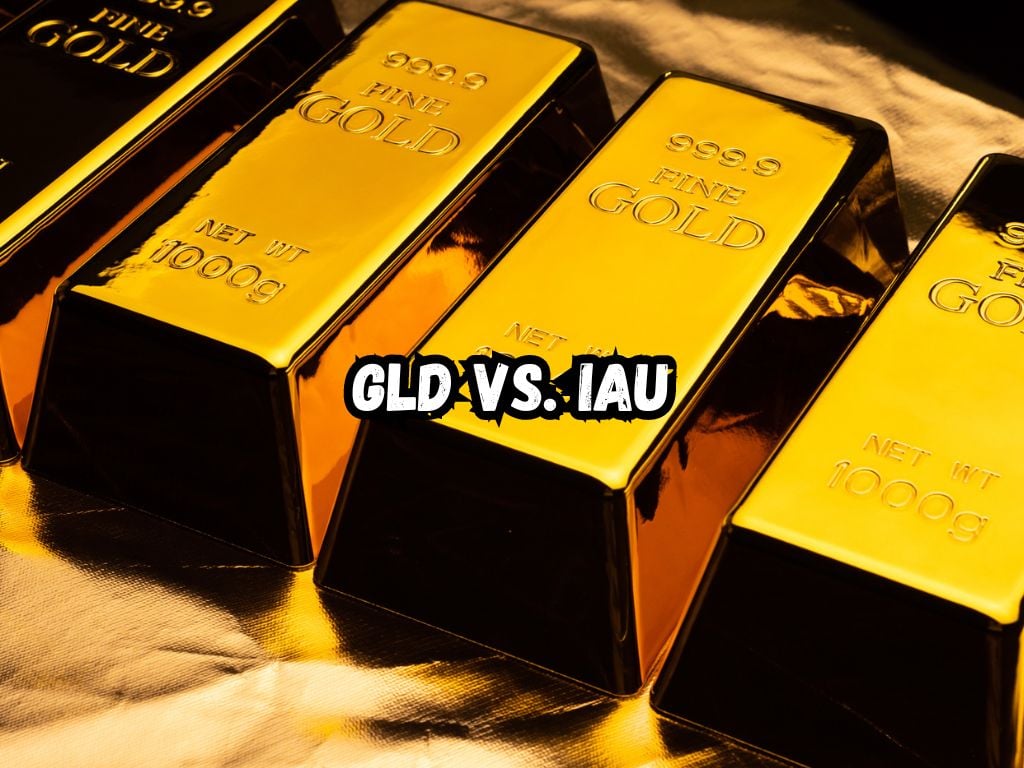Gold has been a sought-after commodity by investors looking for a hedge against inflation, a diversifier in their portfolio, and a safe-haven asset during economic uncertainty.
Gold Exchange-Traded Funds (ETFs) like SPDR Gold Shares (GLD) and iShares Gold Trust (IAU) have gained popularity as they offer a practical way to invest in gold.
This article delves deeply into the specifics of GLD vs IAU, underlining their unique features, notable differences, and their strategic roles in an investment portfolio.
Introduction to Gold ETFs
Gold ETFs are investment vehicles that replicate the performance of gold and provide investors with the opportunity to participate in the gold market with ease. Instead of acquiring physical gold, which necessitates secure storage and various other considerations, investors can buy shares of gold ETFs that symbolize a claim on physical gold.
These ETFs are traded on major stock exchanges, offering a level of liquidity and accessibility similar to trading conventional stocks.

GLD, managed by the SPDR family, is amongst the heftiest and most traded gold ETFs available.
With a massive market capitalization, GLD shares offer exposure to gold prices through the physical gold held by the fund. Here’s a more detailed look at GLD and its characteristics:
Key Features of GLD
- High Liquidity: Due to its substantial market presence and high trading volume, GLD provides exceptional liquidity, making it a favorite for both retail investors and institutional traders.
- Physical Gold Backing: Each share of GLD is backed by a proportionate amount of physical gold, ensuring that investors get the purity of gold exposure.
- Trust and Transparency: The fund’s gold holdings are audited frequently, providing transparency and building trust among investors.
Fee Structure and Investment Suitability
GLD carries a higher expense ratio relative to its counterparts such as IAU. Although the difference might seem minimal, it can compound and affect long-term returns.
This ETF aligns well with investors seeking high liquidity and those who engage in frequent trading.
The IAU is another form of gold ETF that offers similar exposure to gold but has been structured to cater to a different segment of the market.
Below we examine the attributes that make IAU unique.
Features of IAU
- Cost-Effectiveness: IAU boasts a lower expense ratio compared to GLD. For long-term investors, this cost-saving feature is particularly beneficial.
- Accessibility for Smaller Investors: With a lower share price, IAU is more accessible to investors with less capital to invest.
Strategic Advantage for Long-Term Holdings
Given its lower expense ratio, IAU can often be the more strategic choice for investors who plan to hold onto their investments over longer periods.
GLD vs. IAU: Head-to-Head Comparison
When deciding between GLD and IAU, investors need to appraise the nuances of each ETF. Both aim to reflect the performance of gold’s price but differ primarily in cost structure and liquidity.
Expense Ratio and Long-Term Impact
- IAU: Lower expense ratio offers cost savings over time, beneficial to long-term investors.
- GLD: Higher expense ratio may be less of a concern for those looking to benefit from higher liquidity.
Liquidity and Trading Volume Consideration
- GLD: Favoured by those requiring quick and voluminous trades.
- IAU: Sufficient liquidity for most investors but falls short compared to GLD.
Gold Holding and Transparency
Both GLD and IAU maintain physical gold in secured vaults and report their gold holdings regularly, instilling confidence in their investors’ minds.
Investor Profile Fit
Investor goals and preferences play a significant role in the choice between GLD and IAU.
- GLD: Ideal for high-volume traders and those seeking immediate liquidity.
- IAU: More suited for cost-conscious and long-term investors.

Investment Strategy and Gold ETFs
While gold ETFs like GLD and IAU can be beneficial in portfolio diversification, investors need to formulate an adept strategy aligning with their financial goals.
The Role of Gold ETFs in Diversification
Gold ETFs can serve as a non-correlated asset to stocks and bonds, potentially reducing portfolio volatility and exposure to systematic risks.
Portfolio Allocation Advice
Financial advisors often suggest a certain percentage of the total investment portfolio to be allocated in gold or similar assets. The choice of GLD or IAU should reflect the investor’s strategy and investment horizon.
Tax Implications for GLD and IAU Investments
Investors must be cognizant of the tax treatments for gold ETFs. Often considered as collectibles, these ETFs may incur different tax rates compared to traditional securities.
Frequently Asked Questions
How Should I Select Between GLD and IAU?
Your selection should align with your investment objectives, with consideration to factors like expense ratio, investment size, and your preference regarding liquidity.
Is There a Difference in the Tax Treatment of GLD and IAU?
No. Both GLD and IAU are generally subject to the same tax rules as they are both considered collectibles for tax purposes.
Can GLD and IAU ETFs be Part of My Retirement Portfolio?
Both ETFs can be included in a retirement portfolio. Consult with a financial advisor for tailored advice.
Shares of both GLD and IAU can be acquired like any other stock through brokerage accounts.
Conclusion
GLD and IAU offer investor-friendly access to gold, each with its distinct set of advantages.
Whether you opt for GLD’s high liquidity or IAU’s cost efficiency, these gold ETFs provide a secure and transparent route to include physical gold in your portfolio. The ideal choice depends on personal investment strategy, tax considerations, and the specific investor profile.
Careful analysis and prudent financial advice will guide investors to make an informed decision tailored to their individual needs and ambitions.


 Tags:
Tags:










